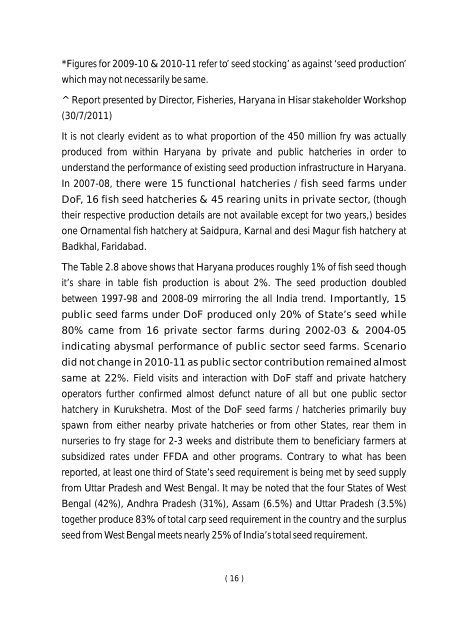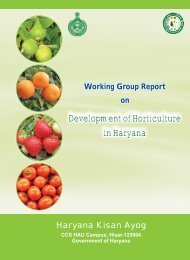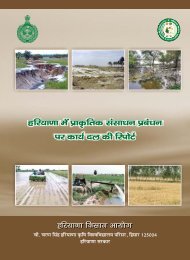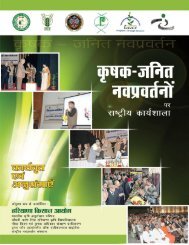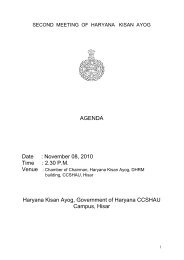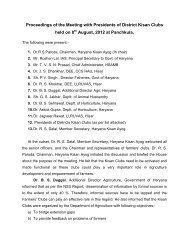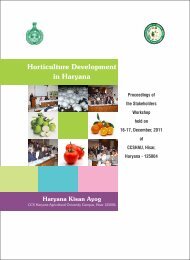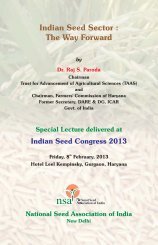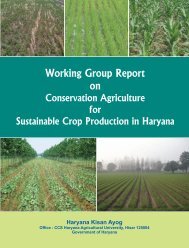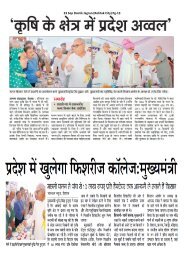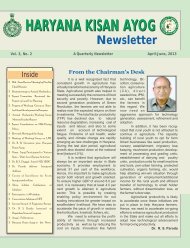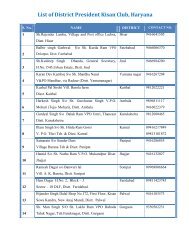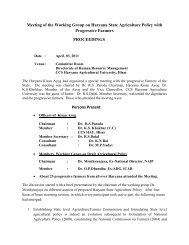Working Group Report on - Haryana Kisan Ayog
Working Group Report on - Haryana Kisan Ayog
Working Group Report on - Haryana Kisan Ayog
- No tags were found...
Create successful ePaper yourself
Turn your PDF publications into a flip-book with our unique Google optimized e-Paper software.
*Figures for 2009-10 & 2010-11 refer to’ seed stocking’ as against ‘seed producti<strong>on</strong>’which may not necessarily be same.^<str<strong>on</strong>g>Report</str<strong>on</strong>g> presented by Director, Fisheries, <strong>Haryana</strong> in Hisar stakeholder Workshop(30/7/2011)It is not clearly evident as to what proporti<strong>on</strong> of the 450 milli<strong>on</strong> fry was actuallyproduced from within <strong>Haryana</strong> by private and public hatcheries in order tounderstand the performance of existing seed producti<strong>on</strong> infrastructure in <strong>Haryana</strong>.In 2007-08, there were 15 functi<strong>on</strong>al hatcheries / fish seed farms underDoF, 16 fish seed hatcheries & 45 rearing units in private sector, (thoughtheir respective producti<strong>on</strong> details are not available except for two years,) besides<strong>on</strong>e Ornamental fish hatchery at Saidpura, Karnal and desi Magur fish hatchery atBadkhal, Faridabad.The Table 2.8 above shows that <strong>Haryana</strong> produces roughly 1% of fish seed thoughit’s share in table fish producti<strong>on</strong> is about 2%. The seed producti<strong>on</strong> doubledbetween 1997-98 and 2008-09 mirroring the all India trend. Importantly, 15public seed farms under DoF produced <strong>on</strong>ly 20% of State’s seed while80% came from 16 private sector farms during 2002-03 & 2004-05indicating abysmal performance of public sector seed farms. Scenariodid not change in 2010-11 as public sector c<strong>on</strong>tributi<strong>on</strong> remained almostsame at 22%. Field visits and interacti<strong>on</strong> with DoF staff and private hatcheryoperators further c<strong>on</strong>firmed almost defunct nature of all but <strong>on</strong>e public sectorhatchery in Kurukshetra. Most of the DoF seed farms / hatcheries primarily buyspawn from either nearby private hatcheries or from other States, rear them innurseries to fry stage for 2-3 weeks and distribute them to beneficiary farmers atsubsidized rates under FFDA and other programs. C<strong>on</strong>trary to what has beenreported, at least <strong>on</strong>e third of State’s seed requirement is being met by seed supplyfrom Uttar Pradesh and West Bengal. It may be noted that the four States of WestBengal (42%), Andhra Pradesh (31%), Assam (6.5%) and Uttar Pradesh (3.5%)together produce 83% of total carp seed requirement in the country and the surplusseed from West Bengal meets nearly 25% of India’s total seed requirement.( 16 )


